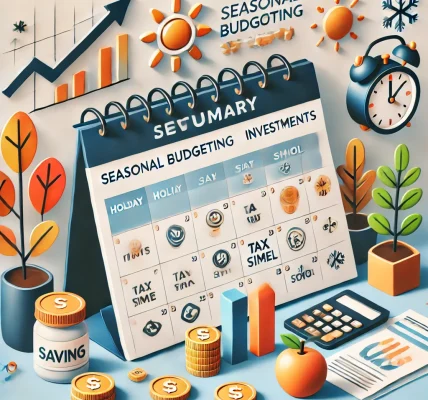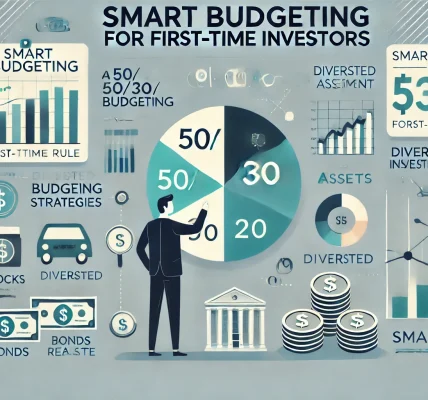In a world where consumerism is constantly on the rise and the pressures of owning more are ever-present, minimalism offers a refreshing and practical approach to managing money. Minimalism isn’t just about decluttering your physical space—it’s also about simplifying your life in a way that allows you to focus on what truly matters, particularly when it comes to your finances. By embracing minimalism, you can streamline your budget, reduce unnecessary expenses, and ultimately save more money.
In this blog post, we will explore the powerful connection between minimalism and budgeting, and how adopting a minimalist mindset can have a positive impact on your financial health. From reducing impulse purchases to prioritizing long-term goals, minimalism can transform the way you approach money management.
What is Minimalism?
Minimalism is the art of intentionally living with less—whether that means decluttering your home, simplifying your wardrobe, or reducing the number of commitments you take on. The core principle of minimalism is to focus on what truly adds value to your life and eliminate distractions that take up your time, energy, and money.
When it comes to budgeting and saving money, minimalism is all about aligning your spending with your core values. Rather than spending money on things that don’t serve your long-term goals, you focus on investing in experiences and items that truly matter to you.
How Minimalism Helps You Save Money
Minimalism helps you save money by reducing wasteful spending and encouraging mindful purchasing. Here’s how:
1. Reduced Impulse Spending
One of the biggest obstacles to maintaining a healthy budget is impulse spending. You’ve probably experienced walking into a store for one item and leaving with a cart full of things you didn’t plan to buy. Minimalism encourages you to carefully evaluate your purchases before making them. By focusing only on what you need and avoiding unnecessary wants, you’ll automatically cut down on impulse buys, resulting in significant savings over time.
2. Decluttering Your Life and Finances
Minimalism extends beyond your possessions. It’s about cutting out unnecessary financial obligations as well. For example, you may find that you’re paying for subscriptions or services you rarely use—streaming services, gym memberships, or magazine subscriptions. By decluttering your financial life and canceling subscriptions you don’t use, you can easily free up extra money to allocate to savings or pay off debt.
3. Avoiding the Pressure to Keep Up with Trends
Consumerism often creates a sense of competition or the pressure to keep up with trends. Whether it’s the latest tech gadget, clothing fashion, or home decor trend, there’s always something new to buy. Minimalism helps you to resist these pressures by shifting your focus to what truly aligns with your values, rather than what others are buying or what the market tells you you need. By avoiding trends, you stop spending money on things that don’t add lasting value to your life.
4. Prioritizing Long-Term Financial Goals
Minimalism encourages you to prioritize the things that truly matter. Instead of spending money on fleeting pleasures or items that will lose their value over time, minimalism allows you to invest in experiences, education, or long-term assets like real estate or retirement savings. By focusing on your long-term financial goals, you can make intentional decisions that benefit your future.
5. Downsizing Major Expenses
Minimalism often involves simplifying bigger aspects of life, like housing, transportation, and personal belongings. Downsizing can lead to significant savings. For example, by choosing to live in a smaller home or apartment, you can reduce your monthly rent or mortgage payment, save on utilities, and cut back on maintenance costs. Similarly, adopting a more minimalist approach to transportation—such as opting for a used car or using public transit—can lower your monthly expenses.
How to Incorporate Minimalism into Your Budgeting Strategy
Now that you understand how minimalism can help save money, let’s explore how to practically incorporate it into your budgeting strategy.
1. Create a Budget That Reflects Your Values
Start by setting financial goals that reflect what’s most important to you. Whether it’s paying off debt, saving for a vacation, or building an emergency fund, minimalism helps you focus on these values and align your spending with them. A value-based budget allows you to prioritize your goals and make informed decisions about where your money goes.
2. Track Your Spending and Cut Back on Unnecessary Expenses
Minimalism isn’t about depriving yourself—it’s about making intentional choices. Start by tracking your spending and identifying areas where you can cut back. For instance, you may realize you’re spending too much on dining out or buying coffee every day. By cutting back on these non-essential expenses, you can free up more money to put toward savings or debt repayment.
3. Implement the 30-Day Rule
One of the key practices in minimalism is delaying purchases. Before buying something new, try implementing the 30-day rule. This means waiting 30 days before making any non-essential purchases. This gives you time to reflect on whether the item is truly necessary and if it aligns with your long-term goals.
4. Simplify Your Finances
Take a minimalist approach to managing your finances by simplifying your accounts and automating savings. Reduce the number of bank accounts and credit cards you have, and consider consolidating debt to make your financial situation easier to manage. Set up automatic transfers to savings accounts or retirement funds so that saving becomes a simple, consistent habit.
5. Focus on Experiences, Not Things
Minimalism encourages investing in experiences that bring joy and fulfillment, rather than accumulating material possessions. This doesn’t mean you can’t buy anything at all, but it encourages you to be intentional about your purchases. Consider spending money on experiences like travel, learning new skills, or spending time with loved ones, which provide long-lasting memories and value.
Final Thoughts
Minimalism isn’t just a lifestyle choice—it’s a powerful tool for budgeting and saving money. By focusing on what truly matters, avoiding unnecessary purchases, and prioritizing long-term goals, you can achieve greater financial freedom and save more money. The minimalist approach to budgeting allows you to spend intentionally, live within your means, and ultimately make more meaningful investments in your future.




